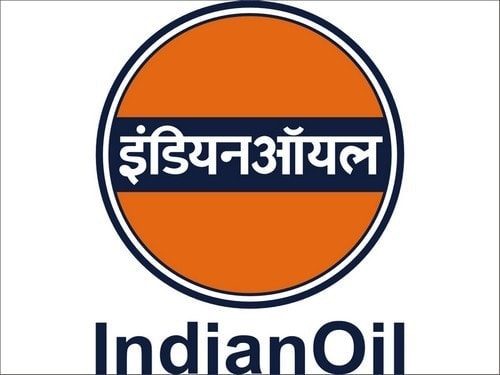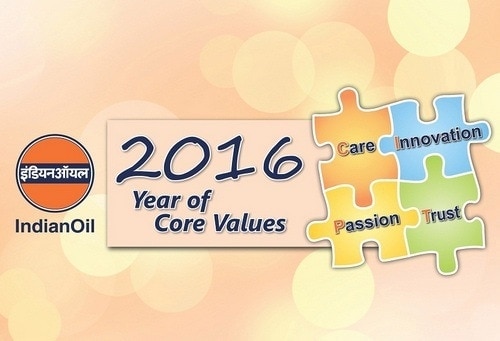The Marketing mix of IOCL analyses the 4Ps of IOCL, which includes the Product, Price, Place, and Promotion of IOCL. Indian Oil Corporation Limited is commonly referred to as IOCL. It is a public company of Indian origins. IOCL is associated with the oil and gas industry and deals in the energy sector. The company has successfully met the demand for energy put up by India. According to Global 500 listings, it ranks first as an Indian corporation and occupies 161st in the world for 2016. The company was founded in 1959 and is under the control of India’s Ministry of Petroleum and Natural Gas. Some of its rival companies in this field are as follows-
- Hindustan Petroleum
- Bharat Petroleum
- Essar Oil
- Reliance Industries
About Indian Oil Corporation Limited (IOCL)
- Type: Oil and gas corporation
- Industry: Energy
- Founded: 30 June 1959
- Founder: Government of India
- Headquarters: New Delhi, India
- Area served: India
- Key people: Shrikant Madhav Vaidya (Chairman) and Rachit Agarwal (Chief executive officer)
- Number of employees: Over 31,000+
Table of Contents
IOCL Product Strategy
Nearly half of petroleum products in India are credited to IOCL, as it occupies a significant market share. It also has a 35% share in refining capacity and 71% in downstream-sector pipelines in terms of capacity. India has a total of twenty-three refineries, and IOCL operates and owns eleven of them.
Indian Oil Corporation Limited (IOCL), one of India’s largest public sector companies, offers diverse products and services across the energy sector.
The new Product Mix of IOCL in 2023 is as follows (Source).
- Petroleum Products: Motor Fuels: Includes petrol (gasoline) and diesel for vehicles, Aviation Fuels: Provides aviation turbine fuel (ATF) for aircraft, Marine Fuels: Offers fuel for shipping and other marine vessels.
- Lubricants: Automotive Lubricants: A range of engine oils, gear oils, greases, and coolants for automobiles; Industrial Lubricants include hydraulic, compressor, and other industrial-grade lubricants.
- Petrochemical Products: Basic Petrochemicals: Produces ethylene, propylene, butadiene, and other petrochemicals; Specialty Petrochemicals: Manufactures a range of specialty chemicals used in various industries.
- Gas: Liquefied Petroleum Gas (LPG): Widely known in India as Indane Gas, used mainly for household cooking. Natural Gas: Provides compressed natural gas (CNG) and liquefied natural gas (LNG) for various applications.
- Renewable Energy: Biofuels: Includes bioethanol and biodiesel. Solar Energy: Marketing solar energy products like solar lanterns and streetlights.
- Exploration and Production: Crude Oil and Natural Gas Exploration: Engages in the exploration, extraction, and production of crude oil and natural gas.
- Retail and Distribution Network: Fuel Stations: Operates a vast network of fuel stations across India. Indane Gas Distribution: Network for distributing LPG cylinders.
- Services: Pipelines: Manages an extensive network of pipelines for transporting crude oil, petroleum products, and natural gas. R&D Services: Provides research and development in various fields related to energy and petrochemicals.
IOCL Place Strategy
IOCL is a powerful company with vested interests. It has nearly twenty joint ventures with partners from reputed firms abroad and in India to pursue a diversified range of business interests. IOCL has subsidiaries in UAE, Mauritius, and Sri Lanka, and it is looking for new opportunities in the energy sector across Africa and Asia.
Its refineries are Paradip, Panipat, Mathura, Haldia, Gujarat, Barauni, Bongaigaon, Guwahati, and Digboi. Its strong distribution channel includes 45,000 customer touchpoints that help distribute and market petroleum products to every part of India through 25,000 diesel and petrol stations and 6,200 KSK outlets located in the rural sector.
More than 9,400 fully automated fuel stations are situated in nearly fifty-five cities, providing products and services to its customers. IOCL occupies a 65% market share in an area like bulk consumer businesses. It has built 6,500 pumps to offer operational services to large-volume consumers like state transport, railways, and defense services. This is possible because of an extensive supply channel that includes 91 bottling plants for LPG sales, 101 fuel stations for aviation, and 129 depots and terminals for bulk storage.
Here’s the place strategy of IOCL.
- Extensive Retail Network Across India: IOCL boasts one of the largest networks of petrol stations in India, strategically located in urban, semi-urban, and rural areas, ensuring widespread availability of its petroleum products to a diverse customer base.
- Pan-India Distribution of LPG: The company’s distribution network for Liquefied Petroleum Gas (LPG), known as Indane, is spread across the country, making it accessible even in remote areas, catering to the cooking fuel needs of millions of households.
- Vast Pipeline Network for Efficient Transportation: IOCL has a comprehensive network of pipelines crisscrossing the country, used for efficient and cost-effective transportation of crude oil, natural gas, and refined products, reducing dependency on road and rail transport.
- Strategic Location of Refineries and Plants: The company’s refineries and petrochemical plants are located near ports and raw material sources to minimize transportation costs and ensure seamless supply chain management.
- Global Presence in Key Markets: Beyond domestic dominance, IOCL has established a presence in international markets, with offices and operations in countries important for sourcing crude oil and exporting its products, aligning with its global expansion strategy.
IOCL Pricing Strategy
IOCL is the largest company in the commercial sector, with 103.99 billion rupees of net profit at the end of the fiscal year 2015-16. Its revenues have been estimated at rupees 4.45 trillion at the end of the financial year 2015. IOCL is run on the principle of profit-making, and the revenues earned are diverted toward the Indian Exchequer.
Indian Oil Corporation Ltd. (IOCL) ‘s pricing and marketing strategy reflects a sophisticated blend of market responsiveness, regulatory compliance, and strategic positioning, essential for its role in the dynamic energy sector:
- Market-Linked Pricing: IOCL’s pricing for petrol, diesel, and other petroleum products is closely aligned with international crude oil prices, ensuring competitiveness and market relevance. This approach allows the company to respond swiftly to global market fluctuations.
- Government Regulations Compliance: As a leading public sector enterprise, IOCL’s pricing strategy aligns with government policies and regulations. This includes adhering to government-mandated pricing for certain products, particularly in the domestic market.
- Competitive Pricing in Retail Fuels: In the highly competitive retail fuel market, IOCL strategically prices its petrol and diesel to be competitive with other significant players while ensuring operational profitability.
- Dynamic LPG Pricing: The pricing of LPG cylinders is regularly adjusted based on international LPG prices and government directives, balancing affordability for consumers with market dynamics.
- Premium for Value-Added Services: IOCL charges a premium for specialized products and services, such as high-grade lubricants and fuel additives, catering to niche markets that require superior quality products.
- Subsidy and Cross-Subsidization: In line with government policies, IOCL implements subsidy schemes for certain products like kerosene and subsidized LPG cylinders, ensuring affordability for lower-income segments, often balanced by slightly higher prices on other products.
- Bulk and Contractual Pricing: For industrial and large-volume customers, IOCL often employs contractual pricing, including bulk discounts and long-term pricing agreements, fostering stable business relationships.
IOCL Promotion Strategy
IOCL, as the most valued and trusted brand, occupies the fifth position among brands in India, according to a survey conducted by The Economic Times in 2010. It was also ranked at 243rd position in the year 2011 by Forbes Global 2000. The company has organized the XTRAPOWER Fleet Card Program, a loyalty program for large fleet operators. Its other essential loyalty programs include Rural Card, EXTRA REWARDS, and Easy Fuel.
It has a strong workforce, including 34,659 employees, to provide the best possible services. IOCL realizes the impact of an excellent promotional plan and offers periodic incentives to maintain its customer base. It has also used advertising and media tools to market its consumer products, including hoardings and television ads to increase its brand visibility.
Some Recent Video ads and Print ads for IOCL are:
Liked this post? Check out the complete series on Marketing Mix

